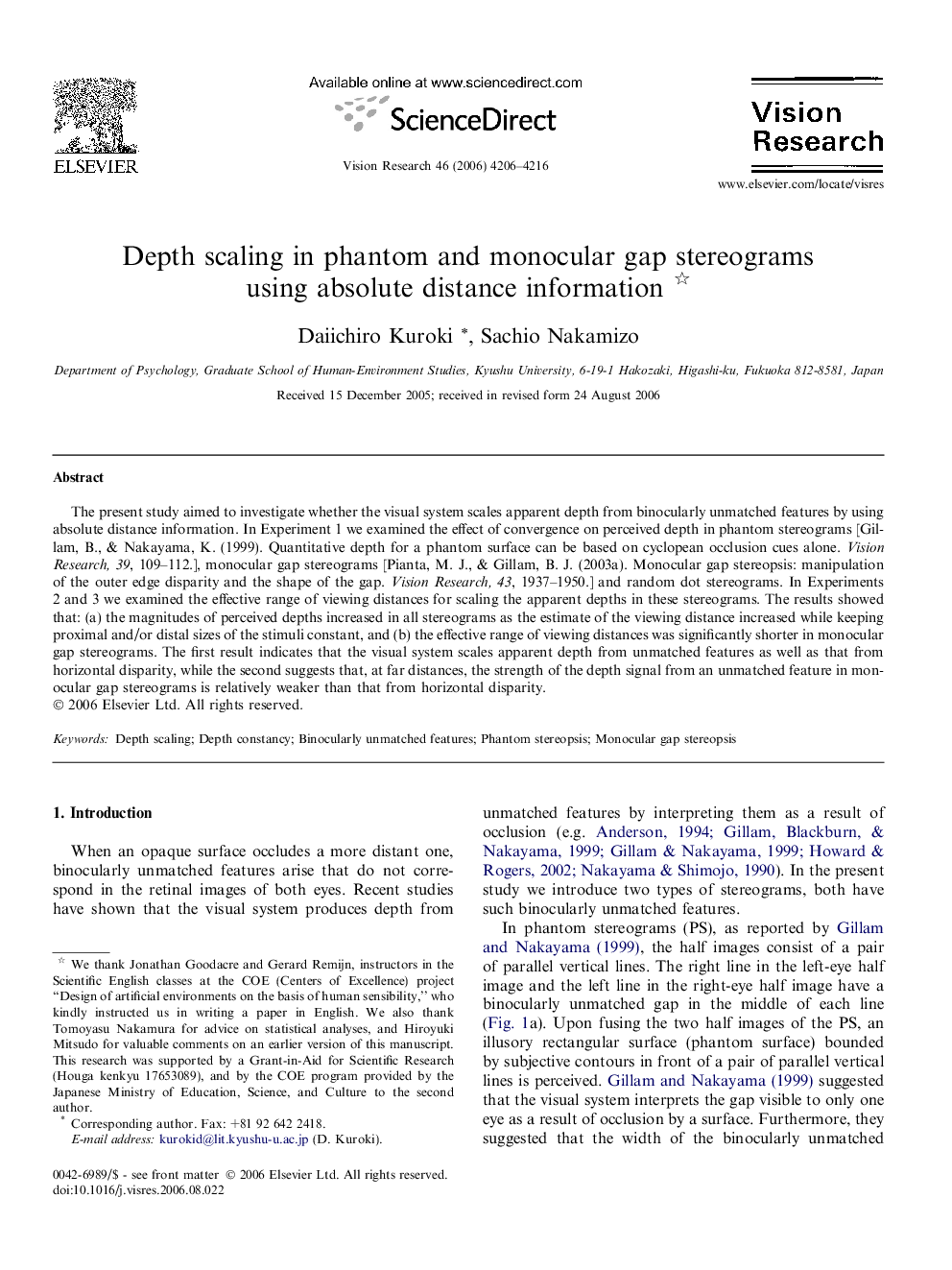| Article ID | Journal | Published Year | Pages | File Type |
|---|---|---|---|---|
| 4036159 | Vision Research | 2006 | 11 Pages |
The present study aimed to investigate whether the visual system scales apparent depth from binocularly unmatched features by using absolute distance information. In Experiment 1 we examined the effect of convergence on perceived depth in phantom stereograms [Gillam, B., & Nakayama, K. (1999). Quantitative depth for a phantom surface can be based on cyclopean occlusion cues alone. Vision Research, 39, 109–112.], monocular gap stereograms [Pianta, M. J., & Gillam, B. J. (2003a). Monocular gap stereopsis: manipulation of the outer edge disparity and the shape of the gap. Vision Research, 43, 1937–1950.] and random dot stereograms. In Experiments 2 and 3 we examined the effective range of viewing distances for scaling the apparent depths in these stereograms. The results showed that: (a) the magnitudes of perceived depths increased in all stereograms as the estimate of the viewing distance increased while keeping proximal and/or distal sizes of the stimuli constant, and (b) the effective range of viewing distances was significantly shorter in monocular gap stereograms. The first result indicates that the visual system scales apparent depth from unmatched features as well as that from horizontal disparity, while the second suggests that, at far distances, the strength of the depth signal from an unmatched feature in monocular gap stereograms is relatively weaker than that from horizontal disparity.
